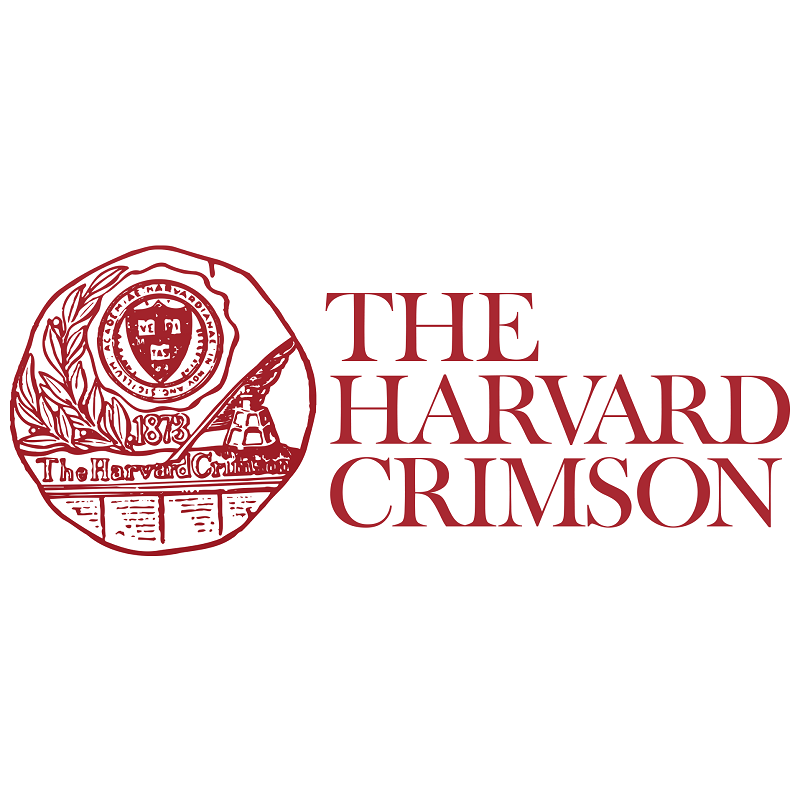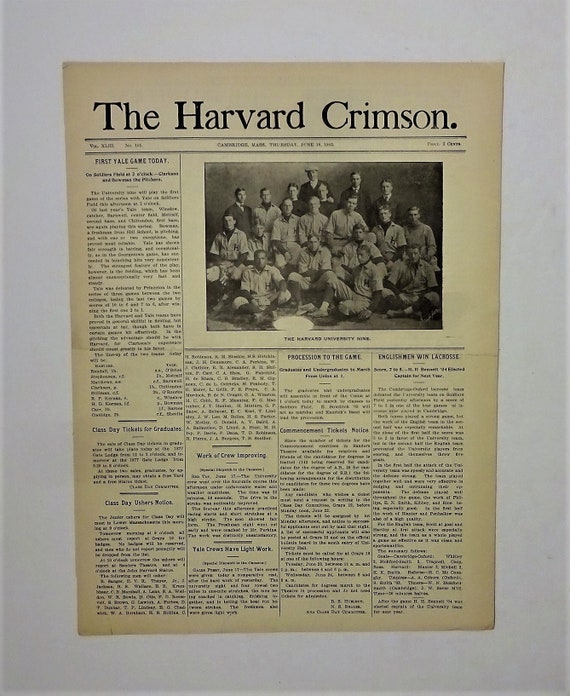Unveiling The Legacy Of The Harvard Crimson Newspaper: A Pillar Of Campus Journalism
There’s something truly magical about stepping onto the hallowed grounds of Harvard University. But beyond the iconic libraries, lecture halls, and quads lies a lesser-known gem that’s been shaping student voices for over a century—the Harvard Crimson newspaper. As one of the oldest and most prestigious student-run publications in the world, it’s not just a newspaper—it’s a legacy. Whether you’re an aspiring journalist, a history buff, or someone who loves a good campus story, the Harvard Crimson has something for everyone. So grab your coffee, settle in, and let’s dive into its storied past and enduring impact.
The Harvard Crimson isn’t just another college newspaper; it’s a cultural institution. Founded in 1873, it has consistently been at the forefront of campus journalism, giving students a platform to voice their opinions, report on pressing issues, and hold those in power accountable. From its humble beginnings to its current status as a digital powerhouse, the Crimson has undergone a fascinating evolution that mirrors the changing landscape of journalism itself.
What makes the Harvard Crimson so special? It’s more than just the articles or the headlines—it’s the people behind them. Every year, hundreds of students from diverse backgrounds come together to create content that resonates with readers both on campus and beyond. Through its pages, we see the pulse of Harvard life, the debates that define generations, and the stories that matter most to young minds. Let’s explore what makes this publication such a pillar of campus journalism.
Read also:Vegamoviescom In The Spotlight Your Ultimate Movie Streaming Hub
Table of Contents
- Biography of the Harvard Crimson
- A Glimpse into Its Rich History
- The Impact of the Harvard Crimson
- Editorial Structure and Workflow
- Transition to Digital Journalism
- Notable Alumni and Their Contributions
- Challenges Faced by the Harvard Crimson
- Ethical Standards in Campus Journalism
- The Future of the Harvard Crimson
- Final Thoughts
Biography of the Harvard Crimson
Founding and Early Days
Let’s rewind the clock to 1873 when a group of ambitious undergraduates decided they wanted to make their voices heard. Enter the Harvard Crimson, a student-run daily newspaper that initially focused on sports coverage. Back then, college newspapers weren’t exactly the norm, but these pioneers had vision. They understood that journalism wasn’t just about reporting scores—it was about telling stories that mattered.
Over the years, the Crimson expanded its scope, covering everything from campus politics to groundbreaking research. Its dedication to truth and transparency earned it respect not just within Harvard but across the nation. And while the world changed around it, the Crimson adapted, ensuring its relevance remained intact.
Key Facts and Figures
Here’s a quick snapshot of the Harvard Crimson:
- Founded in 1873
- Publishes daily during the academic year
- Operated entirely by students
- Features sections like News, Opinion, Arts, Sports, and Science
- Has over 300 staff members each year
A Glimpse into Its Rich History
History buffs, this one’s for you. The Harvard Crimson hasn’t just reported history—it’s been a part of it. From covering World War II protests to publishing investigative pieces on university policies, the Crimson has always been at the center of major campus events. It’s even faced controversy, censorship attempts, and financial struggles, yet it has consistently risen above them all.
One of the most remarkable moments in its history came during the Vietnam War era when the Crimson played a crucial role in amplifying anti-war sentiments among students. Its bold editorials and investigative reports helped shape public opinion and fueled nationwide movements. That’s the kind of impact campus journalism can have when done right.
The Impact of the Harvard Crimson
So, why does the Harvard Crimson matter? Well, for starters, it provides a platform for students to engage with real-world issues. It fosters critical thinking, encourages debate, and holds institutions accountable. But its influence extends far beyond Harvard Yard. Many of its alumni have gone on to become leaders in journalism, politics, and business, carrying the lessons they learned at the Crimson into their professional lives.
Read also:Unveiling The Magic Of Age Of Wonders 4 A Comprehensive Guide
Moreover, the Crimson serves as a training ground for future journalists. Students learn the ropes of reporting, editing, and producing content under tight deadlines. This hands-on experience is invaluable, preparing them for careers in an ever-evolving industry.
Editorial Structure and Workflow
How It All Works
Running a newspaper—especially one as prestigious as the Harvard Crimson—is no small feat. The editorial structure is intricate yet efficient. Each section—News, Opinion, Arts, Sports, etc.—has its own team of editors and writers. These teams work closely together to produce high-quality content daily.
But here’s the kicker: every single person involved is a student. From the editor-in-chief to the copy editors, everyone juggles their academic responsibilities alongside their journalistic duties. It’s a testament to their passion and commitment.
A Day in the Life
A typical day at the Crimson starts early. Reporters are out in the field gathering information, photographers are snapping shots, and editors are reviewing drafts. By late afternoon, everything comes together in a flurry of activity. Deadlines are tight, but the energy is electric. And by evening, the next day’s edition is ready to be published.
Transition to Digital Journalism
In today’s digital age, newspapers face unique challenges. The Harvard Crimson has embraced technology, launching an online platform that complements its print edition. This move allows them to reach a broader audience and stay relevant in a fast-paced media landscape.
But transitioning to digital isn’t without its hurdles. Maintaining quality while meeting the demands of instant news consumption requires innovation and adaptability. The Crimson has risen to the occasion, incorporating multimedia elements like videos, podcasts, and interactive graphics into its storytelling arsenal.
Notable Alumni and Their Contributions
Some of the biggest names in journalism, politics, and entertainment have graced the halls of the Harvard Crimson. Take Robert Rubin, the former U.S. Treasury Secretary, or Alan Dershowitz, the renowned legal scholar. Both cut their teeth as student journalists at the Crimson before achieving greatness in their respective fields.
Then there’s John F. Kennedy, who contributed to the Crimson during his time at Harvard. His writings offer a glimpse into the mind of one of America’s most iconic presidents. These alumni remind us of the profound impact the Crimson has on shaping future leaders.
Challenges Faced by the Harvard Crimson
No journey is without its obstacles. The Harvard Crimson has faced numerous challenges over the years, from dwindling ad revenues to criticism over bias. Yet, it continues to persevere, addressing these issues head-on.
One of the biggest challenges today is maintaining impartiality while covering sensitive topics. With so many voices and perspectives on campus, finding common ground can be tricky. However, the Crimson strives to present balanced, well-researched content that respects all viewpoints.
Ethical Standards in Campus Journalism
Journalism is built on trust, and campus journalism is no exception. The Harvard Crimson adheres to strict ethical standards, ensuring accuracy, fairness, and transparency in all its reporting. This commitment to integrity is what sets it apart from other publications.
Students receive training in journalistic ethics, learning how to navigate complex situations and uphold the highest standards of professionalism. It’s a rigorous process, but one that pays off in the long run, producing journalists who are prepared to tackle the challenges of the modern media landscape.
The Future of the Harvard Crimson
As we look to the future, the Harvard Crimson remains poised to continue its legacy of excellence. With advancements in technology and changing reader preferences, the publication is constantly evolving to meet the needs of its audience.
From experimenting with new formats to expanding its reach through social media, the Crimson is embracing innovation without losing sight of its core values. Its dedication to quality journalism ensures it will remain a pillar of campus life for generations to come.
Final Thoughts
And there you have it—the remarkable story of the Harvard Crimson. From its humble beginnings as a sports-focused publication to its current status as a leader in campus journalism, the Crimson has left an indelible mark on the world of media. Its commitment to truth, transparency, and excellence serves as an inspiration to aspiring journalists everywhere.
So, whether you’re a Harvard student, a journalism enthusiast, or simply someone who appreciates good storytelling, the Harvard Crimson is worth exploring. Dive into its archives, read its latest stories, and witness the power of student journalism firsthand. And hey, if you’re feeling inspired, why not leave a comment or share this article? Let’s keep the conversation going!
Article Recommendations


